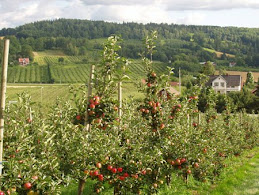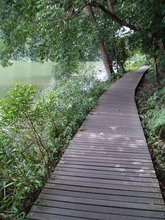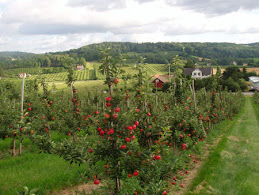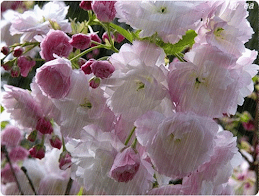From http://epaper.mypaper.sg/emnd/fvxen/fvxp/fvxpress.php?param=2014-12-18
Source Website: http://mypaper.sg/top-stories/baby-boom-wildlife-attractions-here-20141218
By Tanjeetpal Singh, tanjeets@sph.com.sg, Published on Dec 18, 2014
PHOTOS: WILDLIFE RESERVES SINGAPORE
https://blogger.googleusercontent.com/img/b/R29vZ2xl/AVvXsEidMu53EXEyUrnBAh1UUj0Qv-GWky-iMc66HibP75TNiH72WOm4ZlV0316wGpDdq9jmiwkGICT5KuGVIVRnV2lzjgkj76CyCBNVCeBfkvy-dkmQ9d9tV0ZATGmQsAsJB3I1aVlstV5uKGI/s1600/MY_20141218_TJZOO18_P1_913080-1.jpg
http://mypaper.sg/sites/default/files/styles/large/public/field/image/20141218/MY_20141218_TJZOO18_P1_913080.jpg
http://mypaper.sg/top-stories/baby-boom-wildlife-attractions-here-20141218
SINGAPOREANS may be eagerly anticipating the birth of cubs from giant pandas Kai Kai and Jia Jia, but this year, some pretty special babies have already been born at Wildlife Reserves Singapore's (WRS') four zoological attractions.
Since January, the four parks - Jurong Bird Park, Night Safari, River Safari and Singapore Zoo - welcomed more than 400 babies that were either born or hatched.
The latest additions were a pair of Asian lion cubs born on Sept 27 at the Night Safari.
Asian lions are an endangered species with only about 300 left in India's Gir Forest, the only place where they can be found in the wild.
The Night Safari currently has a pride of 13 Asian lions, of which 12 were born here.
Nearly one in four of the babies born this year are animals listed as "threatened" on the International Union
for Conservation of Nature's Red List of Threatened Species. These include the Bali mynah, Javan langur, proboscis monkey and giant anteater.
But the most iconic birth is, perhaps, that of the critically endangered Sunda Pangolin, which is native to Singapore and is used as the logo for WRS' Conservation Fund.
The arrival of Radin on July 13 marked the Night Safari's third successful birth of a Sunda Pangolin at WRS since 2011. This takes the total number of Sunda Pangolins housed there to seven.
https://blogger.googleusercontent.com/img/b/R29vZ2xl/AVvXsEgAYFMn3ThXOXvRC9sudpCBuw-CfRYLquhUK3Pw8Qda9A5nOolw3qQosV_nxA0Kaf3yPyIf7D_a5kSD_XrkqTh7yBVqQ0tMkV6z1uhCmB6oErQO2B58oF477D99XDQHzLpqDl2n7teDGz4/s1600/MY_20141218_TJZOO18_P2_913081-1.jpg
http://mypaper.sg/sites/default/files/styles/large/public/field/image/20141218/MY_20141218_TJZOO18_P2_913081.jpg
http://mypaper.sg/top-stories/baby-boom-wildlife-attractions-here-20141218
These nocturnal creatures have been driven close to extinction by animal trafficking, habitat loss and hunting - they are valued for their meat and scales.
In a previous Straits Times report, experts estimated that there are only about 50 Sunda Pangolins left in Singapore.
"The world is undergoing an unprecedented loss of wildlife as a direct result of human-related activities," said Cheng Wen-Haur, chief life sciences officer, Wildlife Reserves Singapore, in a press statement.
"Each of these births represents a precious glimmer of hope in our effort to help save the planet's biodiversity.
"Many of them are part of coordinated conservation breeding programmes to safeguard against extinction in the wild. All of them are invaluable ambassadors for their species to connect our visitors to the need for their protection."
Visitors to the River Safari's Amazon Flooded Forest can see two new giant river otters, the largest of the world's 13 otter species, which were born on July 8.
M. Geerrthana was thrilled to be able to see the newcomers in October.
"They were way cuter than their parents," said the 20-year-old student.
"It was quite a rare opportunity as I'd seen online videos of baby otters, but I've never actually seen them up close.
"The way they followed their parents around the pool was very adorable."
The River Safari also welcomed a baby giant anteater on May 20, which had to be hand-reared by keepers after being rejected by its mother.
It was previously fed kitten milk replacer, but is now on a specially formulated high-protein diet consisting of boiled eggs mixed with commercial pellets for insect-eating animals. It is not housed in the public viewing area.
In the wild, giant anteaters are threatened by habitat destruction, and are hunted for their meat and coat.
The zoo, meanwhile, added babies from two critically endangered species to its collection: three cotton-top tamarins and 12 Southern River terrapin hatchlings, of which only 200 adult individuals remain in the wild.
It also welcomed a baby proboscis monkey in May and continues to house 12 of these endangered monkeys, making the zoo's collection the largest in the world outside of Indonesia.
Not to be left out, the Jurong Bird Park successfully bred a Goliath palm cockatoo - the largest cockatoo species - for the first time. The chick hatched on April 14.
The park also successfully bred eight critically endangered Bali mynahs.
https://blogger.googleusercontent.com/img/b/R29vZ2xl/AVvXsEihdyUMHcKBqHJxM5HCz0OXA-0MxpBjppHDDu0KmnUCwICpCmShnqg_8zY1HVgySWFJC3SdCg_UIy4GxdTp79aJ_5OQxe9r-jqWCfIne_702HhYouFrJay1gqXIDhcaBe6Y6i9IqG26LOg/s1600/MY_20141218_TJZOO18_P3_913088-1.jpg
http://mypaper.sg/sites/default/files/styles/large/public/field/image/20141218/MY_20141218_TJZOO18_P3_913088.jpg
http://mypaper.sg/top-stories/baby-boom-wildlife-attractions-here-20141218
Bali mynahs are bred by WRS to increase the species' numbers in the wild. All progeny will eventually be sent back to Bali.
Visitors to the zoo like Sandra Chong, 20, appreciate WRS' conservation efforts.
"Many of us rarely get to see any exotic animals, let alone their babies," said the student.
"It is nice to see that the zoo is making an effort to raise the young of endangered animals so that our future generations will get to see and enjoy them."
By Tanjeetpal Singh, tanjeets@sph.com.sg, Published on Dec 18, 2014
Reference
- My Paper, Thursday, December 18, 2014, Page A6, Top Stories
- http://epaper.mypaper.sg/emnd/fvxen/fvxp/fvxpress.php?param=2014-12-18
- http://mypaper.sg/top-stories/baby-boom-wildlife-attractions-here-20141218
- https://blogger.googleusercontent.com/img/b/R29vZ2xl/AVvXsEidMu53EXEyUrnBAh1UUj0Qv-GWky-iMc66HibP75TNiH72WOm4ZlV0316wGpDdq9jmiwkGICT5KuGVIVRnV2lzjgkj76CyCBNVCeBfkvy-dkmQ9d9tV0ZATGmQsAsJB3I1aVlstV5uKGI/s1600/MY_20141218_TJZOO18_P1_913080-1.jpg
- http://mypaper.sg/sites/default/files/styles/large/public/field/image/20141218/MY_20141218_TJZOO18_P1_913080.jpg
- http://mypaper.sg/top-stories/baby-boom-wildlife-attractions-here-20141218
- https://blogger.googleusercontent.com/img/b/R29vZ2xl/AVvXsEgAYFMn3ThXOXvRC9sudpCBuw-CfRYLquhUK3Pw8Qda9A5nOolw3qQosV_nxA0Kaf3yPyIf7D_a5kSD_XrkqTh7yBVqQ0tMkV6z1uhCmB6oErQO2B58oF477D99XDQHzLpqDl2n7teDGz4/s1600/MY_20141218_TJZOO18_P2_913081-1.jpg
- http://mypaper.sg/sites/default/files/styles/large/public/field/image/20141218/MY_20141218_TJZOO18_P2_913081.jpg
- http://mypaper.sg/top-stories/baby-boom-wildlife-attractions-here-20141218
- https://blogger.googleusercontent.com/img/b/R29vZ2xl/AVvXsEihdyUMHcKBqHJxM5HCz0OXA-0MxpBjppHDDu0KmnUCwICpCmShnqg_8zY1HVgySWFJC3SdCg_UIy4GxdTp79aJ_5OQxe9r-jqWCfIne_702HhYouFrJay1gqXIDhcaBe6Y6i9IqG26LOg/s1600/MY_20141218_TJZOO18_P3_913088-1.jpg
- http://mypaper.sg/sites/default/files/styles/large/public/field/image/20141218/MY_20141218_TJZOO18_P3_913088.jpg
- http://mypaper.sg/top-stories/baby-boom-wildlife-attractions-here-20141218












































.jpg)
.gif)
.jpg)





















































%20-%20%E5%82%B7%E5%BF%83%E7%9A%84%E8%B7%AF%20(Sh%C4%81ng%20x%C4%ABn%20de%20l%C3%B9)%20-%20The%20Road%20of%20Sorrow%20(With%20Subtitle)_11.png)


